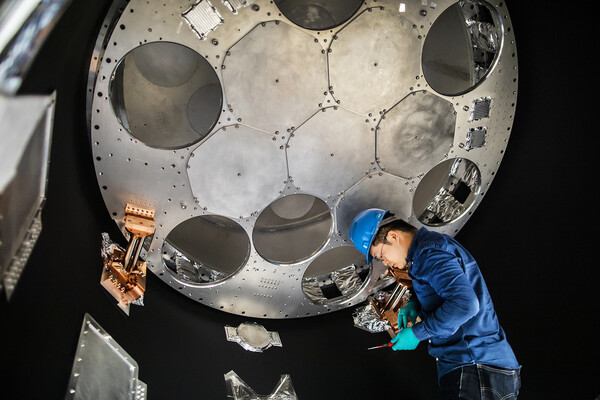Tanyrhinichthys mcallisteri recasts the notion of what it means to be a “primitive” vertebrate, according to paleontologists Lauren Sallan and Jack Stack.
Latest News
Novel ways to store data in light waves
A pair of studies from Penn Engineering provides new ways to increase information density in optical communications, paving the way for a massive increase in the bandwidth of fiber optic networks.
MSU Researchers Team with Multi-Institutional Colleagues in $3.7M Project to Advance Nuclear Physics Experiments
Five Michigan State University researchers from the Facility for Rare Isotope Beams (FRIB) and the Department of Statistics and Probability (STT) are participating in a new $3.7 million National Science Foundation (NSF) project to…
Additional challenges in bringing research online
As research on campus slowly restarts, those whose work requires field surveys, large-scale collaborations, or travel face additional challenges in bringing their research back online.
What do ‘Bohemian Rhapsody,’ ‘Macbeth,’ and a list of Facebook friends all have in common?
To an English scholar or avid reader, the Shakespeare Canon represents some of the greatest literary works of the English language. To a network scientist, Shakespeare’s 37 plays and the 884,421 words they contain also represent a massively complex communication network.
Can contact tracing stop the spread of COVID-19?
Penn experts discuss how contact tracing works, the differences between traditional “analog” and new “digital” approaches, and how these two strategies could shape what everyday life looks like in the next phase of the pandemic.
UCI to lead $10 million NSF-funded center on protecting personal data privacy
Researchers will address technical, social and policy challenges of networked world
Parasites and the microbiome
In a study of ethnically diverse people from Cameroon, the presence of a parasite infection was closely linked to the make-up of the gastrointestinal microbiome, according to a research team led by Penn scientists.
Nature Provides Roadmap to Potential Breakthroughs in Solar Energy Technology
As policymakers increasingly turn toward science in addressing global climate change, one Michigan State University scientist is looking to nature to develop the next generation of solar energy…
Beckman Laser Institute receives Air Force funding for wounded warriors project
Renewed grant of $6.8 million to aid in development of optics-based trauma treatments












